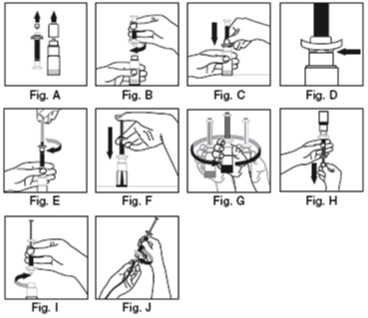Communication is not the message sent but the message received. But when the receiver reacts opposite to our expectations we tend to blame the receiver. You are right and they are wrong. There is a name for this game; it’s called “game over“.
But hang on – here is the good news: if you to stop being right and start to investigate the choice architecture of your message, there is a great chance for you to improve your communication.
 In a recent book called Nudge: Improving Decisions About Health, Wealth, and Happiness, economist Richard Thaler and legal scholar Cass Sunstein explore the psychology of our every day decision making and argue that we make poor decisions due to the architecture of how choices are presented to us.
In a recent book called Nudge: Improving Decisions About Health, Wealth, and Happiness, economist Richard Thaler and legal scholar Cass Sunstein explore the psychology of our every day decision making and argue that we make poor decisions due to the architecture of how choices are presented to us.
This includes food decisions, investment decisions and all kinds of well-informed decisions (that’s the frightening part!).
About Door Handles
Below is a excerpt from chapter 5 explaining the core ingredient of their book “Choice Architecture”
“Early in Thaler’s career he was teaching a class on managerial decision making to business school students. Students would sometimes leave class early to go for job interviews (or a golf game) and would try to sneak out of the room as surreptitiously as possible. Unfortunately for them, the only way out of the room was though the double door in front in full view of the entire class (though not directly in Thaler’s line of sight). The doors were equipped large handsome wood handles, vertically mounted with cylindrical pull about two feet in length. When the students came to these doors, they were faced with two competing instincts.
One instinct says that to leave a room you have to push the door. The other instinct says, when faced with large wooden handles that are obviously designed to be grabbed, you pull. It turns out that the latter instinct trumps the former, and every student leaving the room began by pulling on the handle. Alas, the door opened outward.”
Further in that chapter the authors continue:
“At one point in the semester, Thaler pointed this out to the class as one embarrassed student was pulling the door handle while trying to escape the classroom. Thereafter, as a student got up to leave, the rest of the class would eagerly wait to see whether the student would push or pull. Amazingly, most still pulled!“
With this example Thaler and Sunstein point out that the doors display bad choice architecture because they violate a simple psychological principle called Stimulus Response Compatibility (SRC). SRC means that you want the signal you receive (the stimulus) to be consistent with the desired action. Flat plates say “push me” and big handles say “pull me”. So don’t expect people to push big handles! This is a failure of architecture to accommodate to the basic principles of human psychology.
From Handles to Heamophilia
Saying “red” when you see a red light go on is an example of high compatibility. Having to say “green” when a red light goes on is an example of low compatibility. This has far reaching consequences, even in the medical world. Below is an example that I have experienced multiple times.
Patients with haemophilia A cannot produce a protein known as factor VIII (FVIII) and must get it from somewhere else. KOGENATE® Bayer is a FVIII product that a patient can use instead of natural FVIII. KOGENATE® Bayer is a great product which improves the lives of many haemophilia patients. But it’s also an expensive product, burdening social security with more than 100.000,- Euro per patient per year.
Needless to say: we better don’t waste a drip of this precious and expensive product! Yet, this is precisely where the engineers of Bayer have failed to cater for some SRC into the design of their injection bottles. Have a closer look at the instructions below: the fluid (drawn in black) is in one part and needs to be mixed with the powder in the other part. Movements A to J must be performed a few minutes prior to injection.

To cut a long story short: figure C and D is where it mostly goes wrong – even with well trained nurses, parents and patients. The normal way of using ‘fluid-and-powder’ products is to screw on and inject. That is what the design communicates: “screw and inject”. Yet – as you can see in C and D, there need to be two separate pushes (followed by a ‘click’) prior to adding the fluid. The latter is so counter intuitive that I have literally seen thousands Euros being flushed onto the ground before my eyes.
Even trained parents and nurses who are familiar with this product need their full attention or they miss the crucial C and D.
OK for door handles. Not OK for social security.
About Big IT Systems
To me the link with communication in big organizational change projects is obvious: communications are vital and precious for the health of an organization. And expensive too. Nevertheless communication sometimes turns out in the opposite direction. This is mostly due to failed choice architecture and untested stimuls response compatibility. When respondents fill out the wrong details, use the wrong settings or insert their card upside-down, it is easy to call them ‘stupid users’ or to tell them RTFM (this stands for “Read The F** Manual”).
I still remember the day that the logistics responsible typed the article number in the weight field when we were implementing SAP in a large chemical plant. The automatic interface that we were so proud of automatically blocked all the transports available of our 51 neighbouring plants. We had to write a program to unlock all those transports. And guess what we said: ‘stupid user’. However, this did not prevent other users from committing that same mistake.
Mandatory for Communicators
Next time you build a survey or a communication, a note or a manual requiring your receivers to fill out something, to use a system or to take an action of any kind, consider how SRC-proof your communication is by testing its usability at full length PRIOR to sending it out.
As a final thought I could easily link this idea to the communication articles I have written before. Whenever I talk about communication I tend to use the metaphor of traffic and this one fits in pretty well; If communication would be a mission to bring a vehicle (i.e. your message) from point A to point B, then you want this vehicle to be equipped with an SRC button. SRC will avoid your vehicle from going in the opposite direction when you accelerate.



